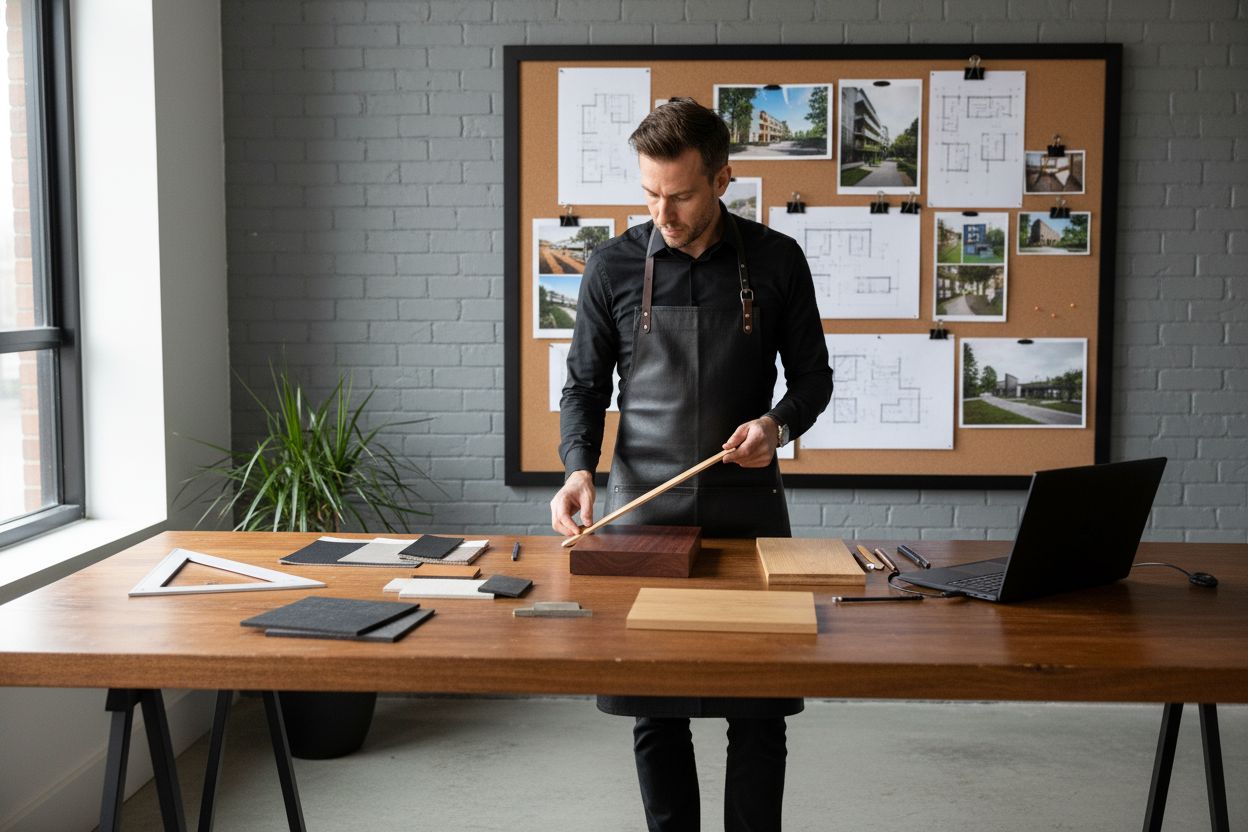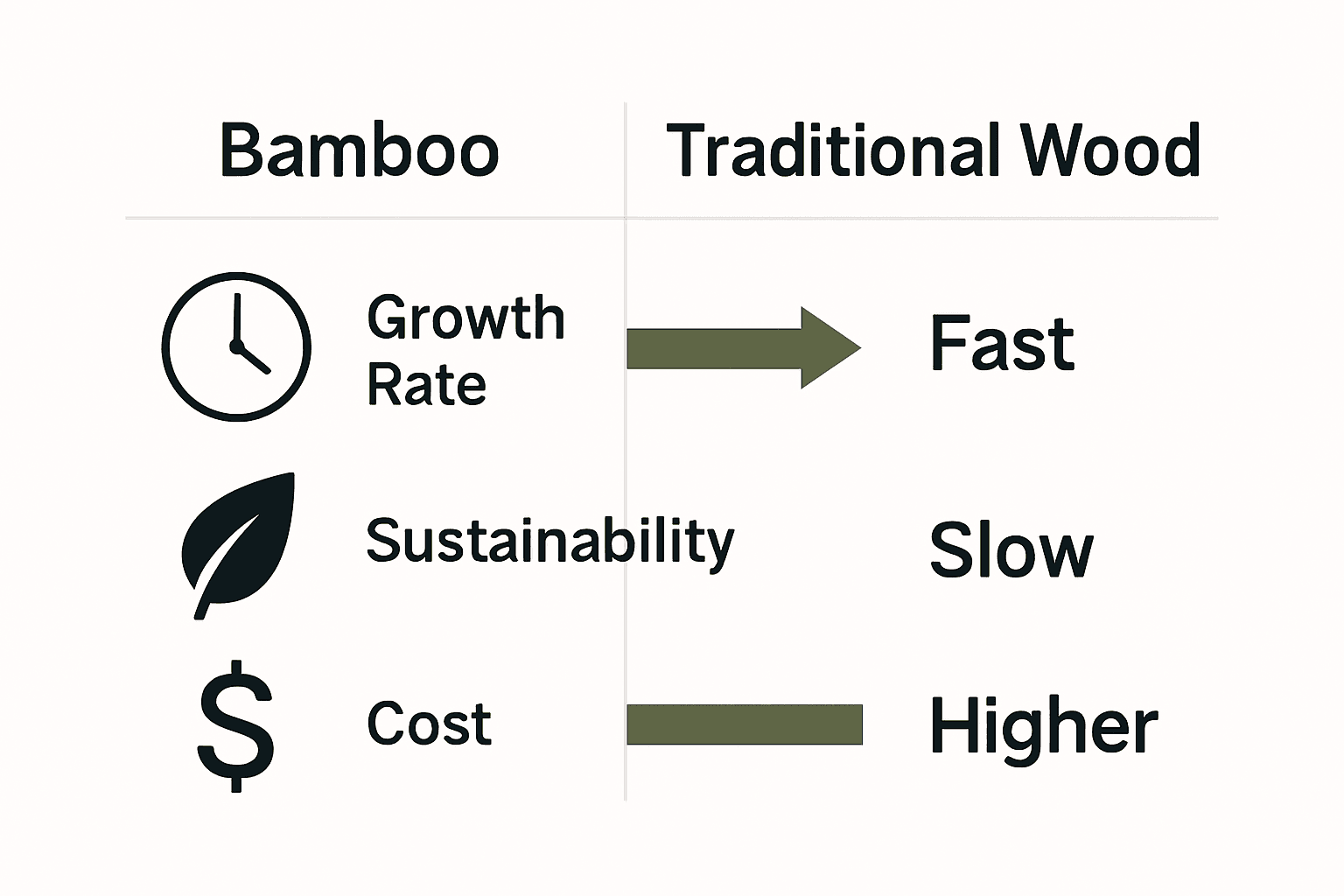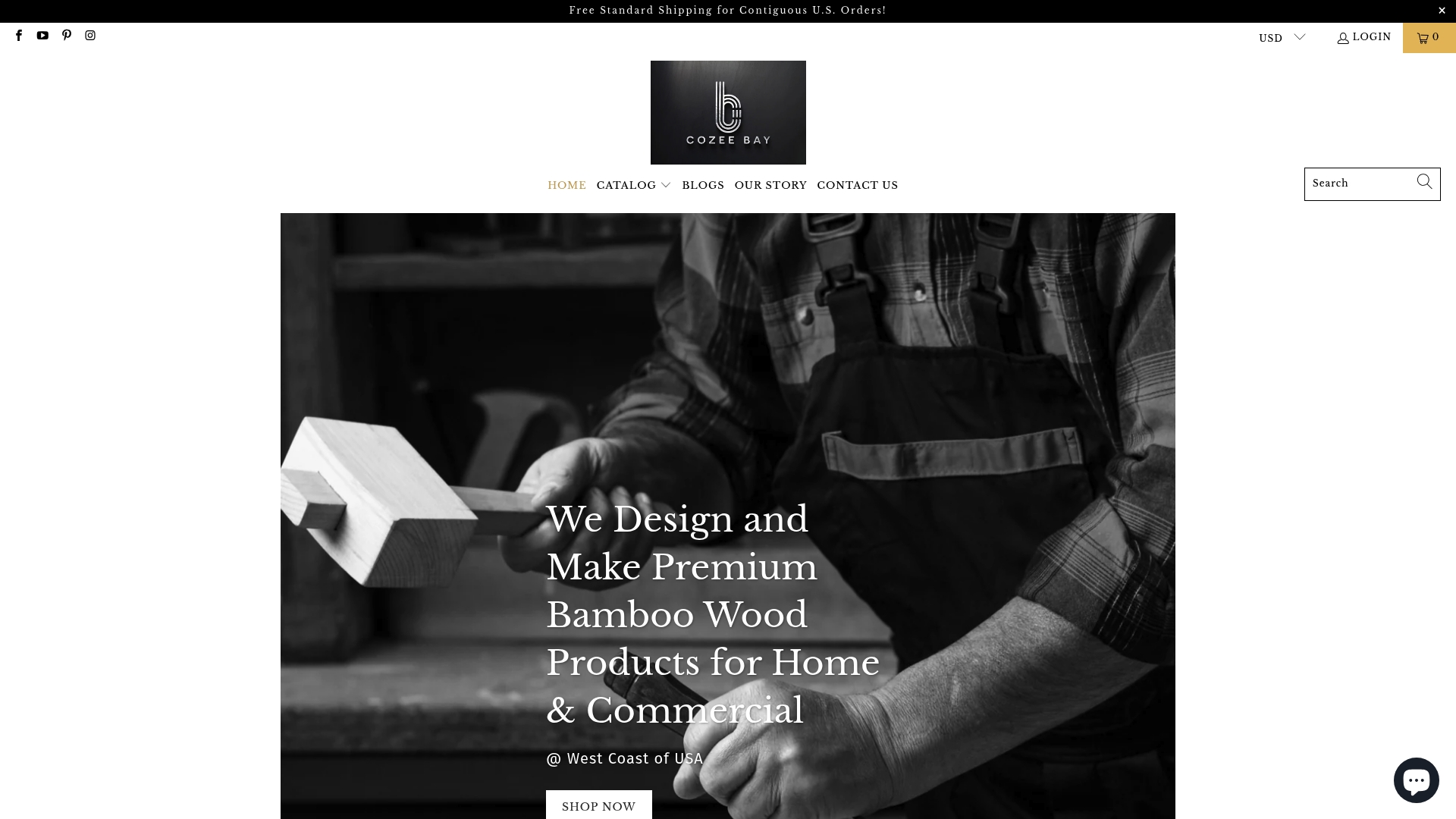Your Cart is Empty
Free Standard Shipping for Contiguous U.S. Orders!
Free Standard Shipping for Contiguous U.S. Orders!
Catalog

Complete Guide to Bamboo vs Traditional Wood
October 14, 2025 6 min read
Did you know bamboo can reach full maturity in just three to five years while hardwood trees often take decades? Choosing the right material for building or design projects goes far beyond simple appearance or tradition. With growing attention on sustainability, understanding the strengths and challenges of both bamboo and traditional wood empowers you to make better decisions for your space and the planet.
Key Takeaways
| Point | Details |
|---|---|
| Sustainability of Bamboo | Bamboo regenerates in 3-5 years and requires less water, making it a more eco-friendly option compared to traditional wood, which can take decades to grow. |
| Strength and Durability | Bamboo has high tensile strength and good moisture resistance, lasting 20-50+ years with minimal maintenance, while traditional hardwoods may require extensive care and can last centuries. |
| Cost-Effectiveness | Bamboo is generally more affordable, averaging $5-$7 per square foot, and incurs lower processing and maintenance costs than many traditional wood species. |
| Versatile Applications | Bamboo’s lightweight, flexible nature makes it suitable for a wide range of applications in both residential and commercial settings, offering aesthetic and structural benefits. |
Table of Contents
- Defining Bamboo And Traditional Wood Materials
- Material Properties And Sustainability Factors
- Durability, Maintenance, And Longevity Comparison
- Cost, Availability, And Design Versatility
- Use Cases In Residential And Commercial Settings
Defining Bamboo and Traditional Wood Materials
When exploring sustainable building materials, understanding the fundamental differences between bamboo and traditional wood becomes crucial. While both serve similar purposes in construction and design, their origins, characteristics, and environmental impacts diverge significantly.
Bamboo, technically a fast-growing grass, represents a remarkable natural material with extraordinary properties. Explore why bamboo is a game-changer for home products and discover its unique advantages. According to research, bamboo exhibits impressive characteristics like:
- Incredibly rapid growth rates compared to traditional trees
- High tensile strength (up to 60,000 psi in certain species)
- Natural composite material with exceptional strength-to-weight ratio
- Renewable and sustainable harvesting potential
Traditional wood, in contrast, originates from tree trunks and branches, representing a more classic building material prized for its:
- Natural aesthetic appeal
- Varied grain patterns
- Multiple density and hardness options
- Long-established use in construction and design
While both materials offer unique benefits, bamboo emerges as an increasingly attractive option for eco-conscious consumers seeking high-performance, sustainable alternatives to conventional wood products. Its remarkable growth speed and structural integrity make it a compelling choice for modern design and construction applications.

Material Properties and Sustainability Factors
Sustainability stands at the core of material selection, and bamboo emerges as a remarkable champion in environmental performance. Learn more about the reasons to choose bamboo for sustainable living and understand its transformative potential. According to research, bamboo demonstrates exceptional ecological advantages compared to traditional wood materials:
- Rapid Renewability: Bamboo regenerates without replanting, growing in just 3-5 years compared to decades for hardwood trees
- Carbon Sequestration: More efficient CO₂ absorption compared to traditional wood species
- Soil Conservation: Root systems help prevent soil erosion while supporting ecosystem health
- Low Resource Consumption: Requires significantly less water and energy to process
Traditional wood, while beautiful and versatile, presents more complex sustainability challenges. Its cultivation demands longer growth periods, higher water usage, and more intensive land management. The carbon footprint associated with wood harvesting and processing remains substantially higher than bamboo’s streamlined environmental impact.
The comparative efficiency of bamboo becomes even more pronounced when examining its lifecycle.
 Where traditional wood requires decades of growth and extensive resources, bamboo provides a rapid, renewable alternative that doesn’t compromise structural integrity or aesthetic appeal. Its natural resilience and quick regeneration make it an increasingly attractive option for environmentally conscious consumers and industries seeking sustainable material solutions.
Where traditional wood requires decades of growth and extensive resources, bamboo provides a rapid, renewable alternative that doesn’t compromise structural integrity or aesthetic appeal. Its natural resilience and quick regeneration make it an increasingly attractive option for environmentally conscious consumers and industries seeking sustainable material solutions.
Here’s a comparison of bamboo and traditional wood across key factors:
| Factor | Bamboo | Traditional Wood |
|---|---|---|
| Growth Rate | 3-5 years Regenerates from roots |
Decades Requires replanting |
| Sustainability | Highly renewable Low water use |
Slower renewal Higher water use |
| Strength | High tensile strength Flexible |
Variable Can be very strong |
| Maintenance | Low Occasional oiling |
High Frequent treatments needed |
| Cost | $5-$7 per sq ft Lower processing |
Often higher Species-dependent |
| Design Versatility | Lightweight Easy to shape |
Wide range Distinct grain patterns |
| Longevity | 20-50+ years (treated) | 50-100+ years (hardwoods) |
Durability, Maintenance, and Longevity Comparison
When evaluating material performance, durability becomes a critical factor for long-term investment and practical use. Discover the benefits of bamboo organizers and understand how material choices impact longevity and maintenance requirements.
According to research, bamboo and traditional wood exhibit fascinating differences in lifespan and care needs:
Bamboo Durability Highlights:
- Indoor treated bamboo can last 25-50+ years
- Exterior treated bamboo maintains integrity for 20-30 years
- Offers good moisture resistance with minimal maintenance
- Requires occasional oil treatments to preserve quality
Traditional Wood Durability Characteristics:
- Hardwoods like oak, teak, and mahogany can last centuries
- More variable hardness and moisture sensitivity
- Demands regular maintenance and protective treatments
- Potentially more complex care requirements
The maintenance approach significantly influences material longevity. Bamboo’s streamlined care requirements make it an attractive option for those seeking a low-maintenance, sustainable alternative. While traditional hardwoods offer exceptional durability, they often require more intensive preservation strategies. The choice ultimately depends on specific environmental conditions, intended use, and personal maintenance preferences.
Cost, Availability, and Design Versatility
Economic considerations play a crucial role when selecting materials for home and commercial projects. Learn more about choosing bamboo home products to understand the financial and design advantages of this remarkable material.
According to research, bamboo demonstrates compelling cost and versatility benefits:
Cost Advantages:
- Bamboo planks average $5-$7 per square foot
- More affordable compared to many traditional wood species
- Lower production and processing costs
- Reduced long-term maintenance expenses
Design and Availability Characteristics:
- Highly flexible and malleable material
- Applicable across multiple applications (furniture, flooring, textiles)
- Lightweight and adaptable to various design aesthetics
- Rapidly renewable resource with consistent availability
Traditional wood, while offering extensive aesthetic variations, typically presents higher cost barriers and more limited availability. Different wood species provide unique color and grain patterns, but often at a premium price point. Bamboo emerges as a cost-effective alternative that doesn’t compromise on design potential, offering designers and homeowners a sustainable, economical solution with remarkable aesthetic flexibility. Its ability to mimic various wood appearances while maintaining lower production costs makes it an increasingly attractive material for contemporary design applications.
Use Cases in Residential and Commercial Settings
Versatility defines bamboo’s incredible potential across diverse architectural and design applications. Explore the understanding of bamboo for home products to appreciate its transformative capabilities in modern environments.
In residential settings, bamboo proves remarkably adaptive:
Residential Applications:
- Flooring with exceptional durability
- Kitchen and bathroom cabinetry
- Furniture design
- Interior wall paneling
- Decorative home accessories
Commercial Use Scenarios:
- Seismic-resistant architectural structures
- Sustainable office furniture
- Eco-friendly retail space design
- Green building construction materials
- Lightweight yet strong structural support
According to recent research, architects and builders worldwide are increasingly adopting bamboo as a sustainable alternative to traditional timber. Its unique mechanical properties, including a high strength-to-weight ratio and remarkable flexibility, make it particularly attractive for innovative construction projects. From earthquake-resistant buildings to modern minimalist interiors, bamboo transcends traditional material limitations, offering designers and developers an environmentally responsible solution that doesn’t compromise on aesthetic or structural integrity. The material’s rapid maturation and sustainable characteristics position it as a forward-thinking choice for both residential and commercial environments seeking to reduce environmental impact while maintaining exceptional design standards.
Ready to Switch from Traditional Wood to a Smarter Bamboo Choice?
If you have been searching for a solution that combines durability, sustainability, and modern design, your journey through the Complete Guide to Bamboo vs Traditional Wood might have uncovered a key challenge. Traditional wood often demands costly time-consuming maintenance and puts a heavy burden on the environment. Bamboo, as explained in the article, brings remarkable benefits such as rapid renewability, cost-efficiency, and minimal upkeep—yet finding products that truly harness these strengths can feel overwhelming.

Bring these benefits home or into your business today with Cozee Bay. Our eco-friendly bamboo paper towel dispensers and handcrafted organizers are thoughtfully designed for both residential and commercial use, including schools, restaurants, coffee shops, and more. Experience free shipping, real customer reviews, and our satisfaction guarantee—all with the peace of mind that comes from choosing materials proven in your research. Visit the Cozee Bay main site now to explore our full selection and start making a real difference to your space and the planet.
Frequently Asked Questions
What are the main differences between bamboo and traditional wood?
Bamboo is a fast-growing grass, while traditional wood comes from trees. Bamboo regenerates in 3-5 years and has high tensile strength, while wood typically takes decades to grow and varies in strength depending on the species.
How sustainable is bamboo compared to traditional wood?
Bamboo is highly sustainable due to its rapid growth, low water use, and ability to regenerate without replanting. In contrast, traditional wood requires longer growth periods and generally has a higher carbon footprint associated with its harvesting and processing.
What maintenance is required for bamboo versus traditional wood?
Bamboo generally requires low maintenance, with occasional oil treatments needed to preserve its quality. Traditional wood, especially hardwoods, often demands regular maintenance and protective treatments to prevent wear and moisture damage.
Can bamboo be used for structural applications like traditional wood?
Yes, bamboo can be used in structural applications due to its high strength-to-weight ratio and flexibility. It is increasingly utilized in innovative construction projects, including seismic-resistant structures and eco-friendly designs.
Recommended
Leave a comment
Comments will be approved before showing up.
Subscribe
Sign up to get the latest on sales, new releases and more …

